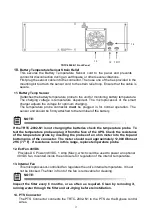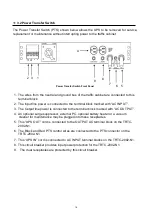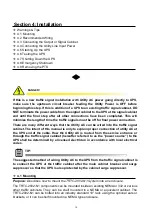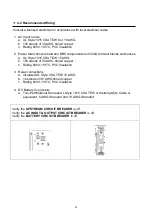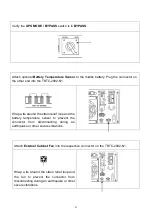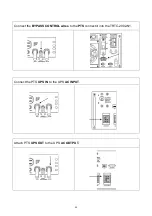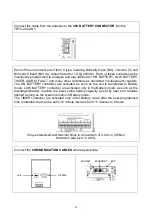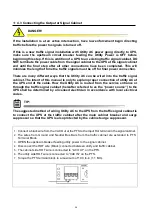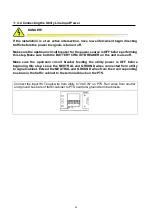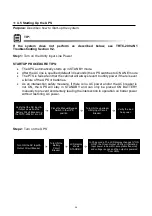
Section 2: Theory of Operation
Intro
2.1 The Advantages
2.2 System Description
The traffic signal cabinet is powered continuously when a TRTC-2002-N1 system is
installed. The system allows connection for the normal utility power using standard terminal
blocks or an optional generator power via standard 30 Amp (optional 50 Amp) generator
receptacle. The optional bypass switch redirects utility power to the load and allows the TRTC-
2002-N1 to be removed for service on a temporary or permanent basis without disrupting the
operation of the traffic signal.
With a fully functioning UPS system, the PTS allows utility power to flow out to the traffic
cabinet, when the utility line is qualified (within the acceptable range as programmed). If the
UPS is not functioning, the PTS will bypass the UPS allowing the utility to flow out to the
traffic cabinet. The UPS input is protected with one circuit breaker located on the PTS as well
as another one located on the UPS module. When the UPS internal BOOST and BUCK is
enabled, the PTS is activated allowing UPS to continuously boost the output when input is
lower, buck or lower the output when input is higher or run from batteries when input power
is outside the specified acceptable range. The PTS has dual NEMA power receptacles for
optional battery heating pads, connecting a vacuum cleaner, or a PC for maintenance.
The smart, temperature compensated internal charger continuously monitors and maintains
the batteries in a fully charged state. For the protection of the battery, the charging process is
automatically discontinued when the battery temperature exceeds 50 degrees C. When the
batteries are fully charged, the smart charger provides a continuously pulsating ON-OFF
trickle charge to keep the batteries topped-off or fully charged. When input power is not
qualified or is outside the acceptable range, the UPS derives the DC power from the storage
tank of four batteries connected in series and maintains output power until the batteries are
depleted down to a specified level or the utility power returns within its specified levels. The
traffic intersection will continue to operate in full operation AND / OR in flash mode as
programmed by the user. Programmable contacts allows the user to place the intersection
in flash mode as soon as the input power is lost or after the batteries are depleted down to
a certain capacity that is determined and programmed by the user. The amount of back-up
time battery power can provide depends on the Amp-hour capacity of the batteries as well
as the intersection watt load that requires support.
2.1 The Advantages
Advanced Power Protection Technology
TRTC-2002-N1 is an Uninterruptible Power Supply (UPS) also known as a Battery
Backup System (BBS) designed for both indoor and outdoor applications. The TRTC-
2002-N1 provides continuous power to traffic and signal equipment.
♦ Advanced Communications
The RS232 and/or USB ports allow for local or remote monitoring of the TRTC-2002-N1.
11
Содержание TRTC-2002-N1
Страница 1: ......
Страница 2: ...2...
Страница 45: ...6 2 Menu Tree 45...
Страница 46: ...46...
Страница 47: ...47...
Страница 48: ...48...
Страница 76: ...HyperTerminal at a Glance 76...
Страница 77: ...PuTTY at a Glance Remember to return to the Session Panel and hit save to save your settings 77...
Страница 87: ......
Страница 88: ......
Страница 89: ......
Страница 90: ......
Страница 91: ......
Страница 92: ...2017 Marathon Power Inc TRTC 2002 N1 User Manual_Jan_2017 2017 Marathon Power Inc...

















